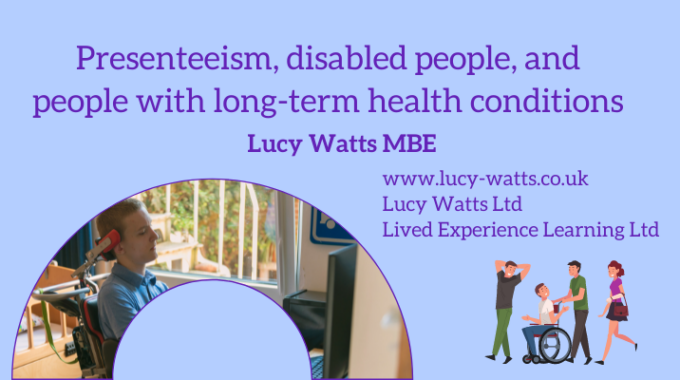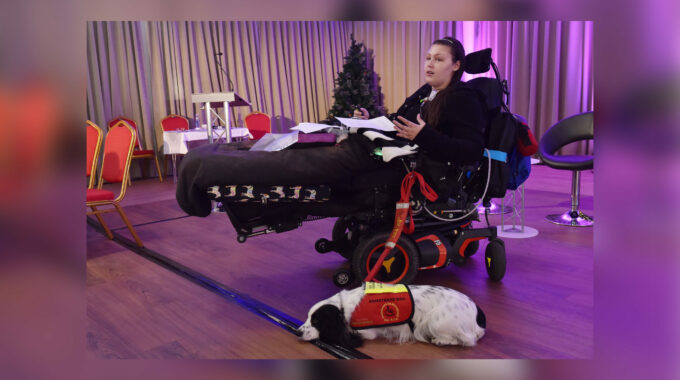What if we viewed lived experience as an asset? As an asset of professional, economic,…
Chronic Intestinal Pseudo Obstruction and Motility Disorders Explained
Chronic Intestinal Pseudo Obstruction
Chronic Intestinal Pseudo Obstruction. Quite a mouthful, huh? Believe me, it’s a lot harder to live with than it is to say it.
Chronic Intestinal Pseudo Obstruction (abbreviated CIPs or CIPO) is a condition of the digestive tract known as a motility disorder as it affects the movement (motility) of food, digestive fluids and air through the gut. The whole of the digestive system can be affected, from mouth to anus, however it is predominantly a condition of the small and large bowels. It can occur in isolation, or be caused by a number of different conditions, such as Ehlers-Danlos Syndrome or Inflammatory Bowel Disease. Though it is generally not considered a life limiting diagnosis, it is potentially fatal and people can pass away from complications of CIPs.
CIPs can be caused by a problem with the nerves (neuropathic) or muscles (myopathic) or a combination of the two (neuromyopathic). In neuropathic pseudo-obstruction, the nerves are damaged or dysfunctional which means they cannot transmit the signals to the muscles to get them to move and push food through the gut. In myopathic pseudo-obstruction, the muscles themselves are too weak or have wasted away so there is no way for the bowel to move as it does not have sufficient musculature. The term ”pseudo-obstruction” means the patient has symptoms of a bowel obstruction but there is no physical or mechanical blockage present. As well as affecting the gastrointestinal system, pseudo-obstruction can affect the nerves and muscles of the bladder so sufferers can have problems with the urinary system too and may need to self catheterise, have a permanent catheter or have surgery to form a Mitrofanoff or Urostomy.
The condition is diagnosed by testing the function of the gut. The most crucial test is the small bowel manometry, but a number of other tests all aid in the diagnosis of CIPs: Barium studies, oesophageal manometry, electrogastrogram, gastric emptying study, capsule endoscopy, gastroscopy (endoscopy), colonoscopy, sitzmark study, anorectal manometry and small bowel MRI. Some of these tests are used to rule out other conditions that can cause these symptoms, rather than to diagnose CIPs itself.
People with CIPs can suffer from a range of debilitating symptoms including abdominal pain, nausea, vomiting, abdominal distension (bloating) and constipation and/or diarrhoea. The disordered or lack of motility of the gut means food, fluid and air does not move through normally, in the worst cases not moving at all. Food, fluid, digestive juices and gas build up in the stomach and/or bowel, causing abdominal distension, constipation and pain. In many cases, high-volume vomiting is caused by the build up of stomach (and sometimes bowel) contents; if they aren’t moving down through the gastrointestinal tract, they have to go somewhere. In the height of a pseudo-obstructive episode, faecal vomiting may occur. Other CIPs patients suffer diarrhoea as the bowel overcompensates for the lack of movement by drawing too much fluid from the bloodstream, making stools very watery, and cramping. It is possible to have both constipation and diarrhoea, often alternating between the two, as the bowel struggles and overcompensates. Diarrhoea can also be caused by treatments that stimulate the bowel and increase the fluid in the bowel, making stools softer.
Sufferers may be unable to nourish and hydrate themselves adequately, through not being able to eat, and/or not being able to digest and absorb sufficient nutrition from food. As a result, patients with CIPs may manage with a restricted diet or by drinking fortified nutritional drinks; in other cases tube feeding into the stomach or small bowel is needed to deliver some or all of the nutrition; or, at the worst end of the spectrum, intravenous feeding (TPN) through a central line is required, delivering all the nutrients the body needs into the heart or a large vein leading to the heart. This is considered a last resort due to the potentially life threatening complications including line infections and liver failure. The inability for the body to absorb enough nutrients and fluid is known as intestinal failure – organ failure means the organ (in this case the intestines) cannot do its job adequately anymore. In this situation a patient will require long term TPN to provide the nutrition and fluid needed to sustain life.
Pseudo-obstruction can be notoriously difficult to treat, especially in severe cases. There are drugs to improve gastric emptying, drugs to stimulate the bowel, drugs to soften stools, enemas and suppositories, and symptom-control drugs such as antiemetics (to stop or reduce vomiting and help with nausea) and other nausea-reducing agents, and painkillers as required – many of which, unfortunately, slow the gut down, which can exacerbate CIPs symptoms. When medications aren’t enough, surgical treatments may be considered. Some patients can benefit from bowel decompression by forming an Ileostomy, where the end of the small bowel is brought out to the surface of the abdomen and a bag is worn over it to collect waste. A tube into the start of the colon, called a Cecostomy, may be inserted so that the bowel can be flushed out on a regular basis. For those who have a lot of trouble with the colon and anus, a sacral nerve stimulator may be implanted to act as a “pacemaker” for the bowel. For those with stomach involvement, a gastric pacemaker may be considered. Some patients find great benefit in having a venting gastrostomy to drain the stomach of the built up food and fluid. As this condition is hard to treat, and no two patients are affected in the same way, what is right for one person might not work for another and often what works best is a combination of treatments rather than a standalone drug or surgical procedure. Patients with Chronic Intestinal Pseudo Obstruction can have a very reduced quality of life. As well as treating the condition itself, symptom control needs to be an important part of their care to give patients the best quality of life possible.
For TPN dependent patients with irreversible intestinal failure who have run out of line access points, have had repeated life-threatening sepsis or who have liver failure, a bowel or multivisceral (multi-organ) transplant may be required. Survival rates for bowel transplant patients are not as successful as many other organ transplants, but for some people this is their only option. This is not a cure, rather trading one set of problems for another, but it can save lives.
Pseudo Obstruction Research Trust
 |
| Emily Jasmine Frost |
The world is crying out for more research into motility disorders including pseudo-obstruction. In the UK we have a small, but much needed, charity called the Pseudo Obstruction Research Trust (PORT). PORT raises awareness of CIPs and, crucially, funding for research. They have raised over £250,000 to date and have helped our understanding of motility disorders greatly. PORT was started by two amazing women, Sue and Sonia, after they met in hospital while their daughters were having treatment for CIPs. Sonia’s daughter Emily Jasmine Frost (21.03.03 – 07.05.05) passed away from complications of pseudo-obstruction aged only two whilst waiting for a transplant, and the charity was formed in her memory. Tragically, Sonia herself is now affected by the condition as a result of Ehlers-Danlos Syndrome and Inflammatory Bowel Disease and is very poorly. Their hard work and dedication is second-to-none and despite being a small charity they’re making a big difference.
PORT is helping to fund the new Paediatric GI Physiology Department at The Royal London Hospital. The GI Physiology Department is considered one of the centres of excellence in the diagnosis and management of motility disorders in the UK. It is one of the largest supra-regional referral centres for children with functional and GI motility disorders, accepting referrals from throughout the UK. The GI Physiology Unit is equipped with state of the art diagnostic equipment originally for adult use, as in their adult GI Physiology Unit, but these have now been adapted to be used in children. The Unit is one of a few centres nationally and in Europe that can apply these technical advances to adult and paediatric patients and more importantly, with the expertise in the diagnosis and management of GI functional disorders, thereby improving the patient’s quality of life. The Paediatric GI Physiology Department is led by Professor Daniel Sifrim, Dr Nigel Meadows and Dr David Rawat. PORT has also donated £24,000 to purchase two bespoke combined pressure-impedance catheters for the unit. The catheters allow simultaneous measurements of pressure (motility) and flow (impedance) in the stomach and intestine. These catheters will be used in research in children with suspected intestinal pseudo-obstruction, and will increase the understanding of gastrointestinal motility and transit in paediatric patients. Another of PORT’s donations have enabled the team at the Paediatric GI Physiology Unit to recruit a dedicated paediatric nurse. This nurse, Lucy, supports young patients and their parents during the investigations, and is a key worker in organising and documenting the department’s activity. She has now been with the team six months and has helped them restructure the department to be more child-friendly, resulting in them having two dedicated days in the unit every week. Lucy is currently performing 40-50 investigations per month.
PORT is also pleased to be funding a research project looking at the link between Ehlers-Danlos Syndrome and Chronic Intestinal Pseudo Obstruction by Professor Qasim Aziz, Professor Charlie Knowles and Dr Asma Fikree. Professor Aziz has been examining the link between joint hypermobility and gut problems and this research will greatly improve our understanding of how Ehlers-Danlos Syndrome (EDS) affects the gut and also improve our understanding of CIPs by looking at what exactly predisposes EDS patients to developing motility disorders and why.
I am pleased to be involved with the Pseudo Obstruction Research Trust and I hope to help the charity to continue to grow. This is local charity, based in Essex, and may be small but believe me, the impact they’re making is huge. All the money raised goes into benefitting patients, and they’re making a real difference. PORT needs your help to continue this good work; join in and supPORT the cause. Do a fundraising event, set yourself a personal challenge, leave a gift in your will, make a regular donation, anything you can think of – every penny counts. Thank you.
Click here to visit our website
Click here to go to our Facebook group
Follow us on Twitter @PORTCharity





This is really interesting. I have to admit, I knew nothing about CIPs, so thank you Lucy for posting this. It sounds like a complex condition and one which needs much more funding, research and resources.
Sometimes I think that the term "hypermobility" in H-EDS needs replacing. It leaves out so many of the other consequences. Maybe "dysfunctional collagen" or "lax collagen disorder" or something along those lines? Something that incorporates the fact that it isn't just bendy joints.
Nice post and thanks for share any way . I want you to visit the link below to get some useful info like Customer Care Number
really interesting thing. I would like to see such kind of info. please keep posting. I will be back here to see more stuff.
yahoo customer service
Really Informative thing. Thanks for sharing the knowledgeable content.
Hi, Thanks for sharing the helpful info. really it is good to stopping by here and I'd love to come here again.
yahoo customer care
I was diagnosed with this in Feb 2021
Severe 😔